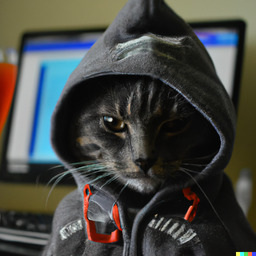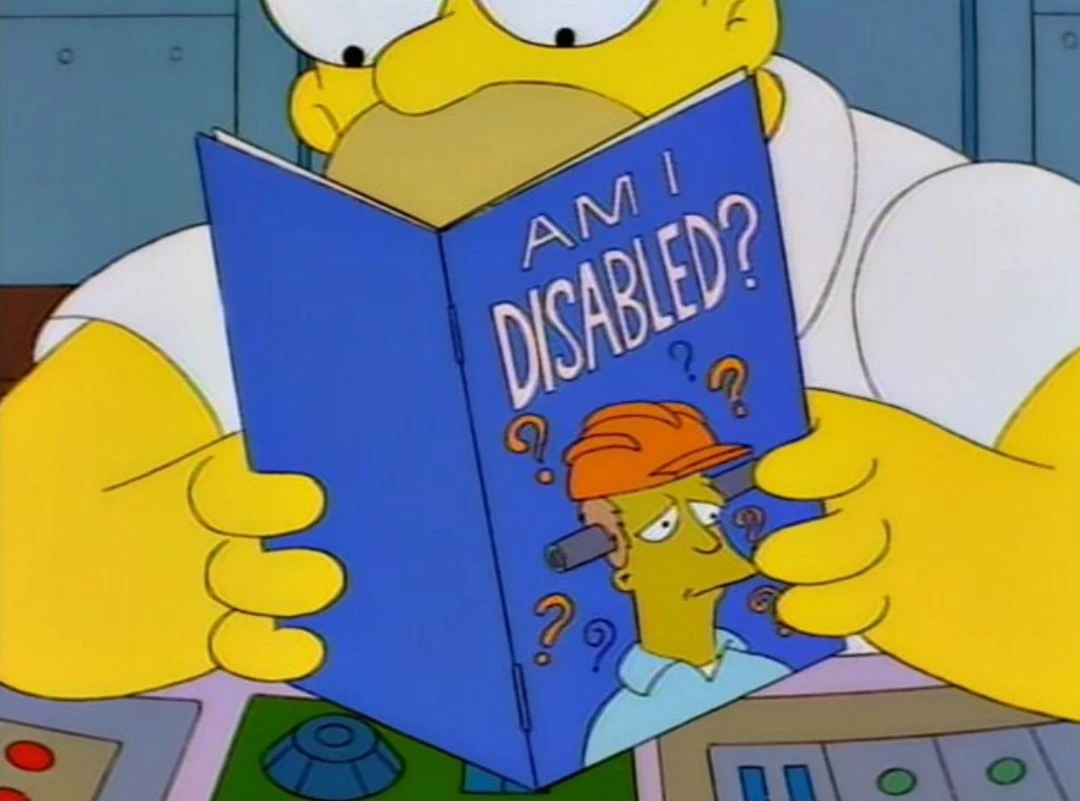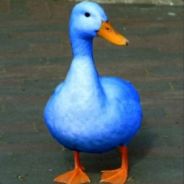So, I’m selfhosting immich, the issue is we tend to take a lot of pictures of the same scene/thing to later pick the best, and well, we can have 5~10 photos which are basically duplicates but not quite.
Some duplicate finding programs put those images at 95% or more similarity.
I’m wondering if there’s any way, probably at file system level, for the same images to be compressed together.
Maybe deduplication?
Have any of you guys handled a similar situation?
Cool idea. If this doesn’t exist, and it probably doesn’t, it sounds like a worthy project to get one’s MSc or perhaps even PhD.
deleted by creator
Compressed length is already known to be a powerful metric for classification tasks, but requires polynomial time to do the classification. As much as I hate to admit it, you’re better off using a neural network because they work in linear time, or figuring out how to apply the kernel trick to the metric outlined in this paper.
a formal paper on using compression length as a measure of similarity: https://arxiv.org/pdf/cs/0111054
a blog post on this topic, applied to image classification:
deleted by creator
deleted by creator
Yeah. That’s what an MP4 does, but I was just saying that first you have to figure out which images are “close enough” to encode this way.
The problem is that OP is asking for something to automatically make decisions for him. Computers don’t make decisions, they follow instructions.
If you have 10 similar images and want a script to delete 9 you don’t want, then how would it know what to delete and keep?
If it doesn’t matter, or if you’ve already chosen the one out of the set you want, just go delete the rest. Easy.
As far as identifying similar images, this is high school level programming at best with a CV model. You just run a pass through something with Yolo or whatever and have it output similarities in confidence of a set of images. The problem is you need a source image to compare it to. If you’re running through thousands of files comprising dozens or hundreds of sets of similar images, you need a source for comparison.
OP didn’t want to delete anything, but to compress them all, exploiting the fact they’re similar to gain efficiency.
Using that as an example. Same premise.
No, not really.
The problem is that OP is asking for something to automatically make decisions for him. Computers don’t make decisions, they follow instructions.
The computer is not asked to make decisions like “pick the best image”. The computer is asked to optimize, like with lossless compression.
That’s not what he’s asking at all
yes, they are. reread the post, I just did so and I’m still confident
No, it is impossible to solve this on filesystem level. In theory, it would be possible to adopt some video codec for compression of such photo series, but it would be a lot of work to integrate it into immich.
Not sure if a de-duplicating filesystem would help with that or not. Depends, I guess, on if there are similarities between the similar images at the block level.
Maybe try setting up a small, test ZFS pool, enabling de-dup, adding some similar images, and then checking the de-dupe rate? If that works, then you can plan a more permanent ZFS (or other filesystem that supports de-duplication) setup to hold your images.
Highly unlikely to succeed. The tiny differences are spread out all over the image.
That’s what I was thinking, but wasn’t sure enough to say beyond “give it a shot and see”.
There might be some savings to be had by enabling compression, though it would depend on what format the images are in to start with. If they’re already in a compressed format, it would probably just be a waste of CPU to try compressing them further at the filesystem level.
No that’s really not possible. I’d recommend tossing the similar ones after you pick the “best”.
Storage is cheap. You suggest combining the images and storing the difference.
You can’t separate the images anymore. You have to store them in a container such that you have one common base image. You can then later on decide which image to look at.
You could also take a short video and only display one image.
Avif uses a video compression algorithm, meaning it’s basically one frame of a video.
Btw, I wouldn’t care about your problem. Storage is cheap. Try saving 10 4k videos and you’ll laugh about your image library
Well how would you know which ones you’d be okay with a program deleting or not? You’re the one taking the pictures.
Deduplication checking is about files that have exactly the same data payload contents. Filesystems don’t have a concept of images versus other files. They just store data objects.
I’m not saying to delete, I’m saying for the file system to save space by something similar to deduping.
If I understand correctly, deduping works by using the same data blocks for similar files, so there’s no actual data loss.I believe this is what some compression algorithms do if you were to compress the similar photos into a single archive. It sounds like that’s what you want (e.g. archive each day), for immich to cache the thumbnails, and only decompress them if you view the full resolution. Maybe test some algorithms like zstd against a group of similar photos vs individually?
FYI file system deduplication works based on file content hash. Only exact 1:1 binary content duplicates share the same hash.
Also, modern image and video encoding algorithms are already the most heavily optimized that computer scientists can currently achieve with consumer hardware, which is why compressing a jpg or mp4 offers negligible savings, and sometimes even increases the file size.
I don’t think there’s anything commercially available that can do it.
However, as an experiment, you could:
- Get a group of photos from a burst shot
- Encode them as individual frames using a modern video codec using, eg VLC.
- See what kind of file size you get with the resulting video output.
- See what artifacts are introduced when you play with encoder settings.
You could probably/eventually script this kind of operation if you have software that can automatically identify and group images.
You could store one “average” image, and deltas on it. Like Git stores your previous version + a bunch of branches on top.
Note that Git doesnt store deltas. It will reuse unchanged files, but stores a (compressed) version of every file that has existed in the whole history, under its SHA1 hash.
Indeed! Interesting! I made an experiment now with a non-compressible file (strings < /dev/urandom | head -n something) and it shows you’re right. 2nd commit, where I added a tiny line to that file, increased repo size by almost the size of the whole file.
Thanks for this bit.
Not sure if you’re aware, but Immich has a duplicate finder
From what I understand OP’s images aren’t the same image, just very similar.
You can also adjust the threshold however that’s probably not a great idea unless you manually want to accept/reject the duplicates.
Yeah, the duplicate finder uses a neural network to find duplicates I think. I went through my wedding album that had a lot of burst shots and it was able to detect similar images well.
Would be surprised if there is any AI involved. Finding duplicates is a solved problem.
AI is only involved in object detection and face recognition.
I wasn’t sure if it was AI or not. According to the description on GitHub:
Utilizes state-of-the-art algorithms to identify duplicates with precision based on hashing values and FAISS Vector Database using ResNet152.
Isn’t ResNet152 a neural network model? I was careful to say neural network instead of AI or machine learning.
Thanks for that link.
AI is the umbrella term for ML, neural networks, etc.
ResNet152 seems to be used only to recognice objects in the image to help when comparing images. I was not aware of that and i am not sure if i would classify it as actuall tool for image deduplication, but i have not looked at the code to determine how much they are doing with it.
As of now they still state that they want to use ML technologies in the future to help, so they either forgot to edit the readme or they do not use it.
And immich-go can run one via cli
When do you do the choosing? Try move that left in the process. Saving storage.
That basic idea is roughly how compression works in general. Think zip, tar, etc. files. Identify snippets of highly used byte sequences and create a “map of where each sequence is used. These methods work great on simple types of data like text files where there’s a lot of repetition. Photos have a lot more randomness and tend not to compress as well. At least not so simply.
You could apply the same methods to multiple image files but I think you’ll run into the same challenge. They won’t compress very well. So you’d have to come up with a more nuanced strategy. It’s a fascinating idea that’s worth exploring. But you’re definitely in the realm of advanced algorithms, file formats, and storage devices.
That’s apparently my long response for “the other responses are right”
Yeah, the image bytes are random because they’re already compressed (unless they’re bitmaps, which is not likely).
deleted by creator
Acronyms, initialisms, abbreviations, contractions, and other phrases which expand to something larger, that I’ve seen in this thread:
Fewer Letters More Letters Git Popular version control system, primarily for code NAS Network-Attached Storage ZFS Solaris/Linux filesystem focusing on data integrity
3 acronyms in this thread; the most compressed thread commented on today has 9 acronyms.
[Thread #953 for this sub, first seen 5th Sep 2024, 23:05] [FAQ] [Full list] [Contact] [Source code]








